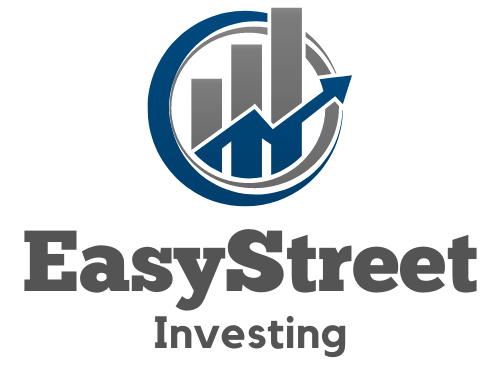In a world where financial inclusion transforms lives, peer-to-peer lending emerges as the unsung hero. Imagine empowering someone’s dream with just a few clicks. This is not just lending; it’s a leap towards meaningful social impact. You’re about to dive into the heart of how P2P platforms are not only shaking up traditional banking but also fueling positive change in communities worldwide.
Curious about how your money can make a real difference? Stick around. We’ll explore the nuts and bolts of microloans that pack a punch, from small business growth to educational opportunities. Learn the ins and outs of responsible investing that feels good and does good, without getting bogged down in jargon. It’s high time we took finance beyond mere transactions – let’s turn it into a force for good, together.
Important Highlights
1. Peer-to-peer lending is revolutionizing the way individuals and small businesses obtain funding, bypassing traditional financial institutions and creating a direct channel for investors to support borrowers with promising projects or in need of financial assistance. This innovative approach leverages technology to connect people, fostering community engagement and enabling participants to contribute to tangible social outcomes.
2. With the rise of peer-to-peer platforms, there is an increasing opportunity for socially conscious investors to uplift communities by providing loans to underprivileged entrepreneurs or those who lack access to conventional bank loans. This not only generates financial returns but also contributes to job creation and economic empowerment in areas that might otherwise be overlooked.
3. The transparency inherent in most peer-to-peer lending systems allows lenders to see exactly where their money is going, monitoring the impact it has on borrowers’ lives. This level of detail encourages a sense of trust and accountability between parties, as lenders can witness the social impact of their investments firsthand.
4. Peer-to-peer lending platforms often incorporate rigorous vetting processes, ensuring that borrowers have viable business plans and the potential for repayment. By carefully selecting candidates, these platforms maintain a balance between achieving social good and financial stability, attracting a broader range of investors concerned with both ethical considerations and economic gains.
5. Education plays a critical role in expanding the reach of peer-to-peer lending; as more individuals understand how their financial contributions can lead to substantial social change, participation rates are likely to increase. Initiatives like informational webinars or partnership with respected organizations such as the United Nations’ Sustainable Development Goals can help inform potential lenders about the power of their investment choices in driving progress across various sectors.
Understanding Peer-to-Peer Lending Platforms
Peer-to-peer (P2P) lending platforms operate as marketplaces connecting borrowers with individual lenders. These platforms use technology to simplify and streamline the lending process, often providing tools for credit assessment, loan origination, and payment processing. By enabling direct transactions between parties, P2P lending can reduce overhead costs associated with traditional financial institutions.
The Role of Social Impact in P2P Lending
P2P lending isn’t just about financial returns; it’s increasingly focused on creating positive social outcomes. Lenders have the opportunity to support causes they care about, such as education loans, green energy projects, or businesses in underserved communities. This approach fosters a sense of community and shared purpose that goes beyond mere monetary transactions.
Examples of Social Impact through P2P Loans
- Microfinance: Providing small loans to entrepreneurs in developing countries allows them to start or expand businesses, contributing to local economic development.
- Eco-friendly projects: Funding renewable energy ventures helps combat climate change by reducing reliance on fossil fuels.
- Educational loans: Financing students’ tuition fees empowers individuals to improve their skills and job prospects.
Evaluating the Risk and Return Profile
Lenders must balance the desire for social impact with financial prudence. Understanding the risk-return profile is critical before committing funds. While helping others can be rewarding, it is essential to assess loan default risks and interest rates offered compared to traditional investments.
Credit Assessment Mechanisms in P2P Lending
P2P platforms have evolved sophisticated credit scoring models. They analyze borrower’s credit history, income stability, and other parameters to mitigate risk. Transparency about these assessments helps lenders make informed decisions aligned with both their financial goals and social impact objectives.
Diversification Strategies for Lenders
To minimize risks, lenders should diversify their investments across various loans and sectors. Backing multiple projects spreads potential losses and creates a balanced portfolio that aligns with both altruistic motives and prudent investing principles.
Incorporating Sustainable Development Goals (SDGs)
Lending strategies can align with the United Nations’ SDGs. By choosing borrowers who address clean water access, quality education, or economic growth, lenders contribute directly to these global targets. Such alignment ensures that personal finance contributes meaningfully to broader societal challenges.
Tracking Social Impact Metrics
To gauge the effectiveness of their investment, lenders should track metrics like number of jobs created, carbon footprint reduction, or improved access to essential services. Regular reporting from borrowers allows investors to see tangible results from their contributions.
Engaging With Borrower Communities
Beyond financial support, engagement with borrower communities can deepen social impact. This might include mentorship programs, volunteering opportunities, or providing business guidance that helps borrowers succeed beyond the initial loan provision.
Leveraging Government Incentives for Social Investments
In some jurisdictions, there are tax incentives for investments in social ventures. These incentives can enhance the appeal of socially oriented P2P lending by offering benefits such as tax deductions or credits on interest earned from qualified social impact loans.
Promoting Financial Literacy and Education
Educating potential borrowers about managing finances responsibly is another layer of creating social value through P2P lending. Platforms that offer resources on financial planning help build stronger communities capable of sustaining long-term economic growth.
Partnering With Nonprofits and NGOs
Collaborations between P2P platforms and nonprofits can amplify social impact efforts. These partnerships might involve co-developed loan products designed for specific socially beneficial purposes or joint educational initiatives that empower disadvantaged groups financially.
Tips for Maximizing Social Impact Through Peer-to-Peer Lending?
- Select platforms known for strong social impact missions and transparent operations.
- Analyze borrower profiles carefully considering both financial soundness and potential social benefits.
- Diversify your lending portfolio across different sectors that reflect your values and SDGs.
- Maintain active communication with borrowers to understand how your investment makes a difference.
- Monitor regulatory changes regarding tax incentives for social investments to optimize benefits.
- Consider joining lender communities within P2P platforms to share experiences and best practices.
- Leverage tools provided by platforms for tracking social impact metrics effectively.
- Acknowledge the importance of patience – many socially impactful investments realize their full potential over longer horizons.
Frequently Asked Questions
What is Peer-to-Peer Lending?
Peer-to-peer lending, often called P2P lending, is a way people can lend and borrow money without using a traditional bank. It happens online, where borrowers are matched with investors willing to fund their loans.
How Does Peer-to-Peer Lending Create Social Impact?
P2P lending platforms can empower underserved communities by providing access to capital for those who might not qualify for traditional loans. This financial inclusion fosters entrepreneurship and has a positive ripple effect on communities.
Can I Invest in Social Projects through P2P Platforms?
Yes! Many platforms allow you to invest in projects with social goals, such as green energy initiatives or small businesses in developing regions, amplifying your impact.
Is Investing in P2P Loans Risky?
All investments carry risk, but P2P lending can be managed by diversifying your investments across different loans and carefully selecting the projects you fund based on their social impact and return potential.
What Returns Can I Expect from Social Impact P2P Lending?
Returns vary based on the risk level of the loans you choose. However, investing in social impact projects may offer competitive returns while also contributing to positive change.
How Do I Choose the Right P2P Platform?
Look for platforms with robust vetting processes, transparent fee structures, and a track record of successfully funding socially impactful projects.
Are My Investments Secure on a P2P Platform?
No investment is entirely secure; however, reputable platforms employ measures to safeguard your funds. Always do thorough research before investing.
Do I Need a Lot of Money to Start Investing in P2P Loans?
Not necessarily. Many platforms have low minimum investment requirements, making it accessible for individuals to start investing and contributing to social causes.
How Long Are Typical Loan Terms in P2P Lending?
The loan terms can range from a few months to several years, depending on the borrower’s needs and the platform’s structure.
Can I Measure the Social Impact of My Investments?
Certainly. Platforms often provide reports detailing the outcomes of funded projects, allowing you to see the direct results of your investments.
In Closing: The Power of Your Investment Choices
In conclusion, peer-to-peer lending isn’t just about financial returns; it’s an avenue for creating tangible social good. By choosing to invest in socially impactful projects, you’re not only earning potential income but also supporting initiatives that make a difference in people’s lives. The ripple effects of your investment decisions can extend far beyond immediate financial gains, fostering sustainable development and strengthening communities worldwide.
This innovative form of lending bridges the gap between finance and philanthropy. As we move forward into an era where every dollar counts towards shaping our world, consider how peer-to-peer lending can be part of your legacy—a legacy that champions economic empowerment and social progress. Remember that with every project you fund, you’re casting a vote for the kind of world you want to live in.

